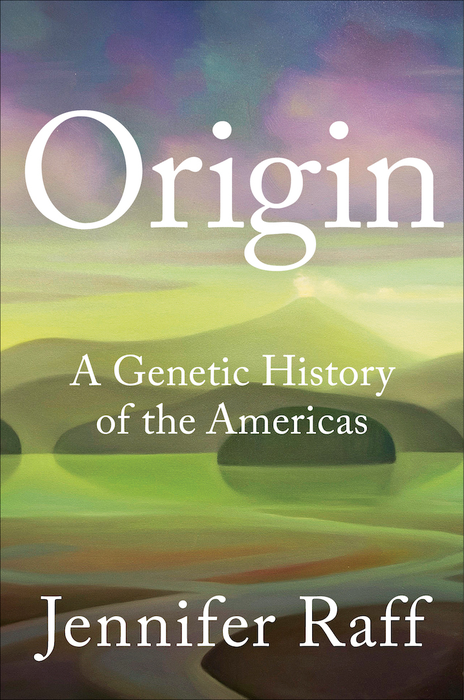A new book for all audiences combines archaeology with emerging genetic evidence to tell the story of the first people to populate the Americas. Origin: A Genetic History of the Americas is written by Jennifer Raff, associate professor of anthropology at the University of Kansas, was published this month by Twelve Books, and recently has entered the New York Times’ bestseller list.
“This book is for everybody,” Raff said. “I hope that faculty who teach about themes in this book might find it useful for their courses as well, but it’s definitely not aimed at a scholarly audience—it’s very much for the general public, who seem to be very, very interested in the peopling of the Americas and what we know about it. It’s an exploration and an overview of the genetic and archaeological evidence for how people first got to the Americas.”

Raff’s book also explores how scientists arrived at current knowledge of the peopling of the Americas—research that has at times come at the expense of Indigenous communities.
“It’s not really a pleasant history,” Raff said. “Indigenous peoples have been very harmed by some of the research that’s been done in pursuit of an answer to the question of where and how did people get here. As I was writing this book, I thought it was important to explore that theme, as well as what the genetic and archaeological evidence shows us. These things are intertwined.”
REVIEW OF ORIGIN COMING SOON TO ARCHAEOLOGYHERALD.COM
According to the KU researcher, because of so much interest in the topic, both on a scholarly level and from the public, it’s important to understand the implications of this area of study on descendants of the original peoples of the Americas.
A Genetic History of the Americas
“Genetics can be used as a tool for understanding the past, but also this area of research can harm Indigenous peoples, and we need to be mindful of that,” Raff said. “I give examples of harmful research in the book. But I also talk about examples of the good work that has been done by many archaeologists and geneticists who have worked collaboratively with tribes, developing long-term relationships and doing research together in productive and respectful partnerships.”
This, she said, is how she and her colleagues in the Department of Anthropology try to do their work.
“KU’s anthropology department has long been a leader in community-engaged anthropological genetics research, and all of us, from the chair of the department to the undergraduate researchers, prioritize respect for tribal sovereignty and care for Indigenous ancestors in our work.”
She said the state of knowledge of how the Americas were populated is “really in flux” and recent discoveries hold the potential to change the story.
“Current genetic and archaeological evidence situate the ancestors of the Indigenous peoples of the Americas first in Siberia and East Asia,” Raff said. “There were two populations: one is ancestral to present-day East Asians, one is referred to as Ancient North Eurasians. By about 25,000 years ago, give or take, these two populations interacted and produced multiple populations, one of which became ancestral to Native Americans, and one of which stayed in Siberia.”
To underscore the mysterious nature of the migration of the first peoples into North America, Raff pointed to a site found in White Sands, N.M., which shows evidence of humans living there about 25,000 years ago.
“It’s just mind-blowing, so that’s one of the big outstanding questions—how people got into the Americas after the Last Glacial Maximum, or maybe before,” she said. “We’re still working it out. What we see in the genomes of these ancient populations is a splitting of the populations into different groups, and then there’s an interesting distribution of those groups across North and South America. That’s all in the book.”





